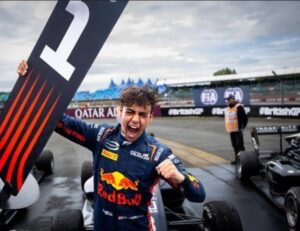Max Verstappen’s dominance in Formula 1 has prompted the FIA to introduce several rule changes aimed at maintaining competitive balance and enhancing the sport’s excitement. Here are ten notable adjustments influenced by his performances:

- Sprint Race Format Changes: In response to Verstappen’s ability to excel in sprint races, the FIA modified the format to create more unpredictability. Adjustments included points allocation and qualifying formats to encourage closer racing.
-
Tire Management Regulations: Verstappen’s skill in tire management led to the introduction of stricter tire wear rules. Teams now face more stringent monitoring of tire usage to prevent any advantage gained from extended stints on softer compounds.
-
Engine Usage Limitations: To curb Verstappen’s engine dominance, the FIA has imposed stricter penalties for exceeding engine component limits. This change aims to ensure that all teams manage their power units more conservatively throughout the season.
-
DRS Zone Adjustments: Verstappen’s frequent overtakes using DRS prompted changes in how DRS zones are configured. The FIA has varied the activation points and zone lengths to balance the effectiveness of overtaking opportunities.
-
Qualifying Format Adjustments: The FIA has tweaked the qualifying format to create more uncertainty. These changes aim to prevent a single driver from consistently monopolizing pole position, making it harder for any one competitor to dominate.
-
Track Limits Enforcement: Verstappen’s adeptness at exploiting track limits has led to stricter enforcement of boundary rules. The FIA has clarified regulations around track limits, ensuring that drivers face penalties for exceeding them during qualifying and races.
-
Car Design Regulations: To level the playing field, the FIA has revised regulations concerning car design, particularly aerodynamic features. These adjustments aim to limit downforce and prevent any one car from gaining a significant advantage.
-
Safety Car Procedures: Verstappen’s ability to capitalize on safety car situations led to changes in how safety car procedures are executed. The FIA has worked to streamline restarts and ensure fairness in the distribution of advantages during these periods.
-
Cost Cap Enforcement: As teams struggled to keep up with Red Bull’s spending, the FIA reinforced cost cap regulations. Enhanced scrutiny aims to ensure that all teams operate within financial limits, promoting a more competitive environment.
-
Fan Engagement Initiatives: Recognizing Verstappen’s popularity and the need for fan engagement, the FIA has implemented initiatives like fan voting on certain race decisions. This change aims to enhance the spectator experience and keep audiences invested in the sport.
These rule changes reflect the FIA’s ongoing effort to maintain competitive integrity in Formula 1, balancing the scales in a sport increasingly influenced by the exceptional abilities of drivers like Max Verstappen.








